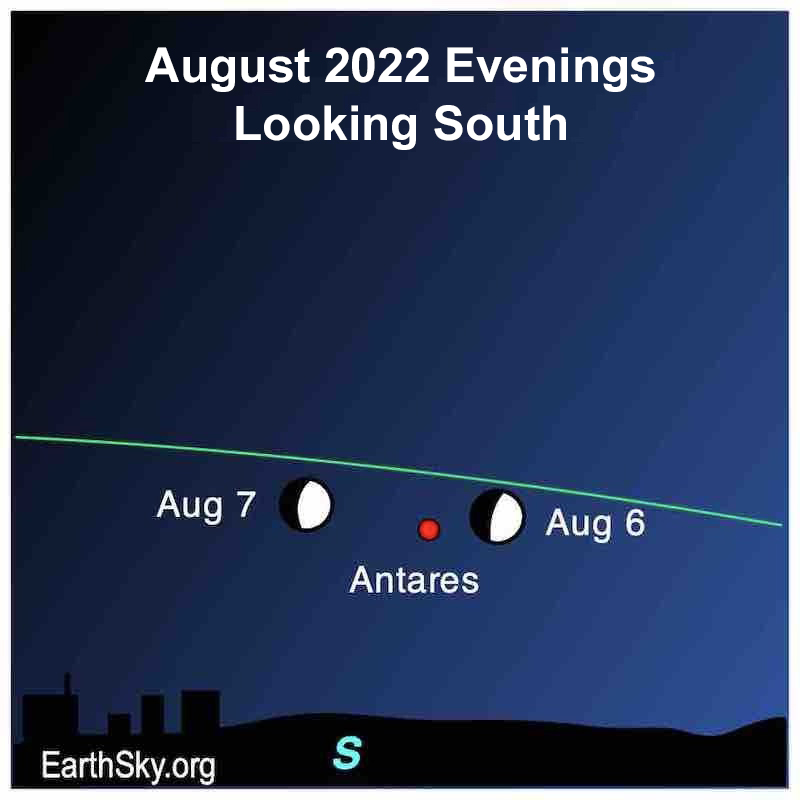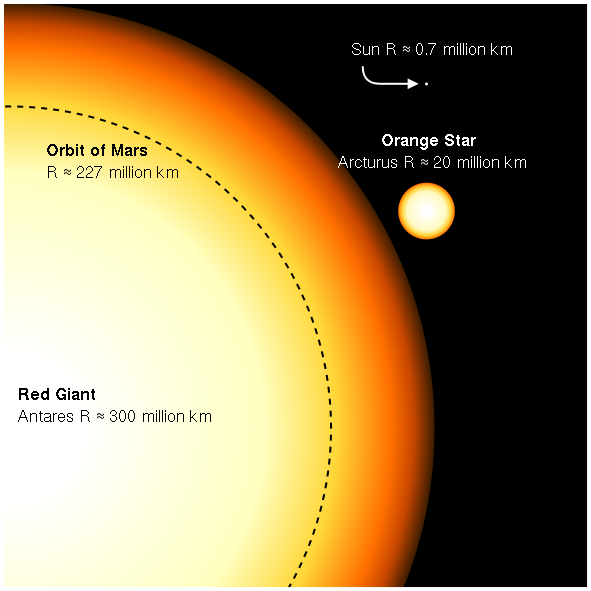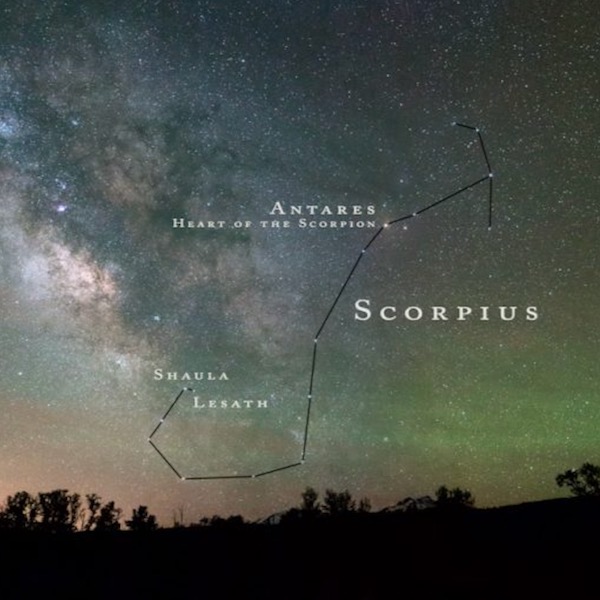
Moon near fiery Antares August 6 and 7
First quarter moon was on August 5, and now the moon is in a waxing gibbous phase: more than half lighted but less than full. The moon will be bright in our sky as evening falls. On the evenings of August 6 and 7, 2022, you’ll find the bright moon near fiery Antares, the Heart of Scorpius the Scorpion.
Notice Antares’ red color and rapid twinkling!

Antares is red
Any red-looking star that you can see with the unaided eye is either a red giant or red supergiant star. Antares is a red supergiant.
Antares, which is in the autumn of its years, is expected to explode as a supernova one of these days.
No telling when that’ll happen, though. It could happen tomorrow or a million years from now.
Antares is big
Antares lies way out there, some 600 light-years distant. But this star easily shines at 1st-magnitude brightness. In order to beam so brightly in our sky, this star must be extremely luminous, that is, intrinsically very brilliant as opposed to merely appearing bright because of a nearer distance.
Antares’ red color indicates a relatively cool surface temperature, and cool stars shine less brilliantly than hot stars of the same size. But Antares is just so big. Its sheer size makes this star more luminous than many stars with higher surface temperatures.

Antares is the Scorpion’s Heart
Scorpius the Scorpion is one of the few constellations that looks like the creature for which it was named. In a dark-enough sky (say, a suburban sky), you’ll easily spot a curved line of stars arcing down toward your horizon: the Scorpion’s Tail. Antares isn’t in the Tail, though. This bright red star – beloved around the world – represents the Heart of the Scorpion.
In a truly dark sky, after the moon has moved away, you’ll find Antares and Scorpius near the starry band of the Milky Way.

For more great observing events in the coming weeks, visit EarthSky’s night sky guide
Bottom line: Watch for the moon near fiery Antares on the evenings of August 6 and 7, 2022. They’ll be a stirring sight!
The post Moon near fiery Antares August 6 and 7 first appeared on EarthSky.
0 Commentaires